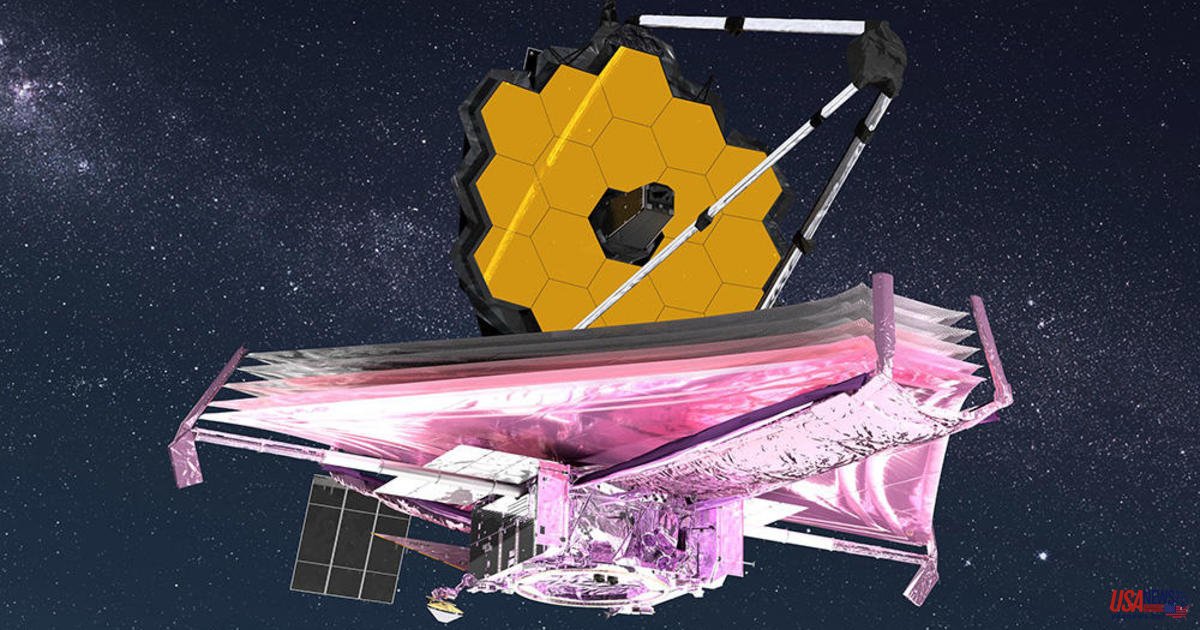Four-and-a half months after the Christmas Day launch of the James Webb Space Telescope, engineers have nearly perfect aligned its complex optical system. This will allow for final calibrations and the release in July of the first showcase science images, officials announced Monday.
"I'm thrilled to report that the telescope alignment was completed with performance even higher than we expected," said Michael McElwain (Webb project scientist, NASA's Goddard Space Flight Center).
"We have basically achieved perfect alignment of the telescopes. The telescope optics are not adjustable to make material improvements in our science performance.
Test images showing sharp stars were released on April 18. On Monday, a new image was revealed showing two views of a starfield in the Large Magellanic Cloud. This satellite galaxy is part of the Milky Way. The smaller, now-retired Spitzer Space Telescope took one image and Webb's Mid-Infrared Instrument (MIRI) captured the other.
The Spitzer image shows blurred stars and hints of nebulosity. Webb's view, however, shows clear stars and well-defined clouds.
Marcia Rieke (principal investigator of Webb's Near-Infrared Camera or NIRCAM) stated that Webb's images will be superior from an intellectual perspective.
"It is only when you see the image it produces that you truly internalize and go WOW! Think about what you're going to learn. Spitzer taught us many things, but this is a whole new world. It is simply breathtaking."
Engineers and scientists will now spend the next two-months carefully calibrating Webb’s four science instruments and collecting test images to verify 17 operating modes.
The team will first reveal a series called "early release observation," or EROs. These jaw-dropping images show spectacular astronomical targets and Webb's scientific capabilities. This will help to justify the $10 billion price tag.
NASA will reveal the ERO images and spectra of the potential targets in mid-July, although this list is closely guarded.
Klaus Pontoppidan (Webb project scientist, Space Telescope Science Institute Baltimore), stated that the goal of the Webb project was to show the world and the public that Webb works well. It's also a chance to celebrate the start of many years worth of Webb science.
The targets were selected by an expert committee and will display all four science instruments.
Webb was created to capture faint light from galaxies and stars that formed after the big bang 13.8billion years ago. This light has been extended into the infrared area of the spectrum through the expansion of space.
Webb's secondary and 18 hexagonal segments of the primary mirror were aligned with nanometer precision to achieve its sharp focus. Each segment was equipped with ultra-precise tilt actuators. This resulted in 18 reflected beams being combined into one point.
Webb must detect the infrared light stretching out from the first stars or galaxies to be detected. This is possible because Webb uses a delicate five-layer sunshade, which was deployed quickly after launch.
The instruments and mirrors have been cooled to 390 degrees below zero Fahrenheit since then. MIRI's high-tech cryo-cooler has helped it to see longer wavelengths at minus 449 degrees, which is just 6 degrees above absolute 0.
McElwain stated that "Overall, it has been a phenomenal observatory performance." "We are really in the homestretch. We are currently calibrating and characterizing both the observatory as well as the science instruments.
"From my perspective there are always risks going ahead, but I have great faith that we'll get the finish line here and have a fantastic science mission with incredible scientific discovery within the next few months. "I'm super excited to be here."













